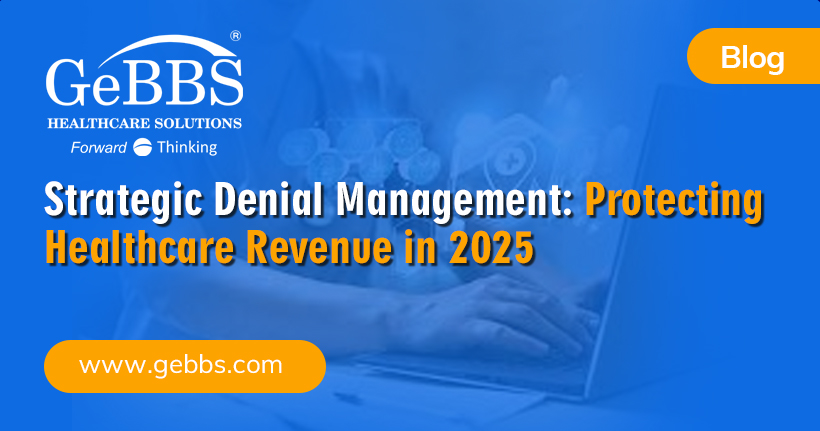Looking ahead to 2020, it’s safe to assume that most hospitals and health systems will continue to focus on improving their revenue cycle – after all, it’s the only way to survive in a rapidly-consolidating market where margins continue to shrink. While most systems have been working on this for years, the industry continues to change and being nimble and addressing those factors that provide the biggest “bang for the buck” can make all the difference.
For 2020, those key areas include – finding creative ways to address the increase in patient payment responsibility and reducing your cost to collect. The good news is the two go hand in hand. Here, we’ll explore how to prepare for a stronger revenue cycle in the new year.
Focus on the Patient. It’s the number one rule of healthcare, and now it applies to the revenue cycle as well as the patient care side. While hospitals have long considered insurance companies and government agencies such as Medicare and Medicaid as the primary payer – patients are now responsible for a much larger portion of overall healthcare costs. High deductible plans, increasing copays and coinsurance rates have had a huge impact on hospitals’ RCM and many are slow to catch up. Experts estimate providers saw up to a 50% increase in revenue owed by patients in recent years – many of which are written off since they can be difficult to collect. Here are a few strategies to consider as you navigate this changing landscape.
- • Collect up front. Healthcare is one of the only industries where consumers often receive the service before making any payment. Hospitals and providers that collect applicable co-pays, coinsurance, etc. prior to service will typically have a stronger revenue cycle.
• Educate and inform. Patients deserve to know and understand how much a given service is going to cost them – and having these conversations up-front often leads to higher collection rates. Verifying a patient’s coverage and helping them understand their benefits is the best place to start. Many EMRs and managed care companies are beginning to offer online estimator tools to help patients determine their costs ahead of time – evaluate and select a tool that’s the most accurate for your patients and promote those. Others have a patient financial services team that is available to work with patients (taking their insurance coverage into account) before care is delivered to get a rough estimate of the patient responsibility. Others still are posting price lists for standard services such as imaging and lab, routine deliveries and certain elective orthopedic procedures.
• Make it easier to pay. Savvy organizations are beginning to offer third-party financing options in lieu of dated payment plans that historically failed to collect. Allowing online payment (either via your patient portal or a third-party tool) and sending digital reminders when payment is due or overdue can also help improve your ability to collect.
Reduce Your Cost to Collect. One of Healthcare Financial Management Association (HFMA)’s strategic key performance indicators, cost to collect, is an important measure when evaluating the health of your revenue cycle. While organizations measure cost to collect in varying ways, most include the expenses associated with functions such as eligibility and insurance verification, CDI programs, transcription and coding, etc. Reducing your overall cost to collect can have a significant impact on your revenue cycle – here are a few ways to keep these costs under control.
-
• Decrease denials. If you’re over the industry best practices benchmark of 5 percent (on first submission), you have some work to do. Hiring or contracting with highly skilled coders can decrease denials. Focusing on improving front-end processes such as eligibility verification, preauthorization, and capturing accurate information at patient registration can also play a role.
• Know your numbers. Focusing on improving KPIs such as days in A/R and the percentage of A/R greater than 120 days will generate substantial improvements in your revenue cycle. Putting consistent processes into place across the system such as: working denials daily; following up with payers for each claim submission and posting charges daily are best practices. If your percentage of A/R greater than 120 days is high, it’s time for a thorough evaluation of your revenue cycle workflows.
• Collect up front. Notice this tip is duplicated – and that is intentional. According to a 2017 report, nearly 70% of patients with a balance of less than $500 never fully pay their bills. Collecting at the point of service is essential for any organization looking to improve their revenue cycle. Ensure practices and policies are in place that provide clear instructions on how to collect patient payment at the point of service – and hold patient registration staff accountable for upholding them.
One thing in healthcare is for certain – there are no certainties. In a rapidly changing industry such as healthcare, organizations that take control of their revenue cycle and focus on the factors that can provide the greatest return will be well-positioned for whatever 2020 brings.
GeBBS Healthcare Solutions offers complete end to end revenue cycle management solutions to support your efforts in 2020. To learn more, visit gebbs.com or click here to schedule a meeting with one of our RCM Experts.






